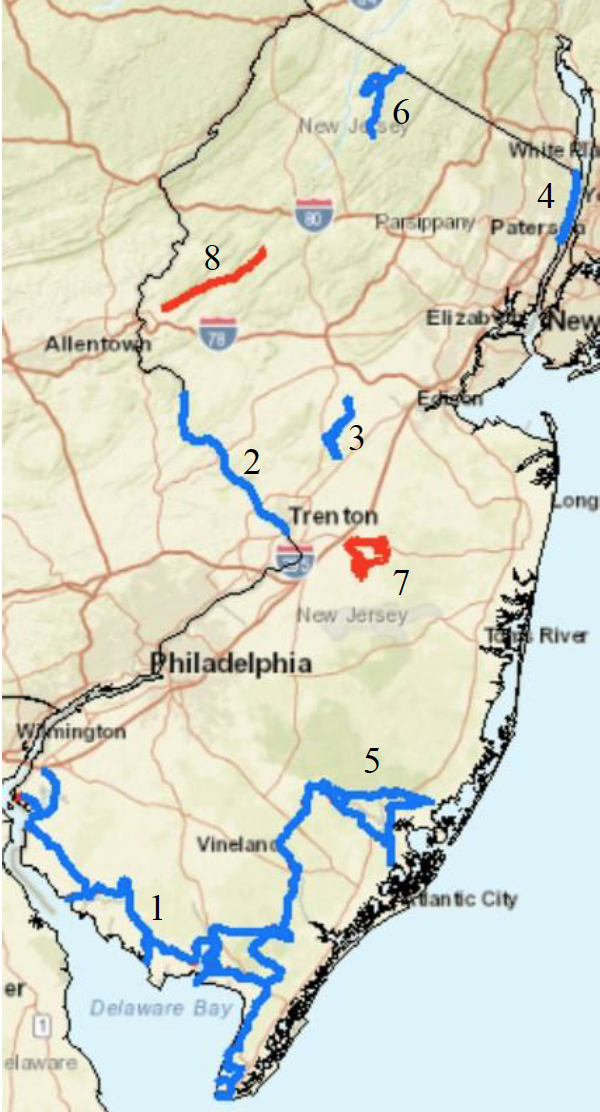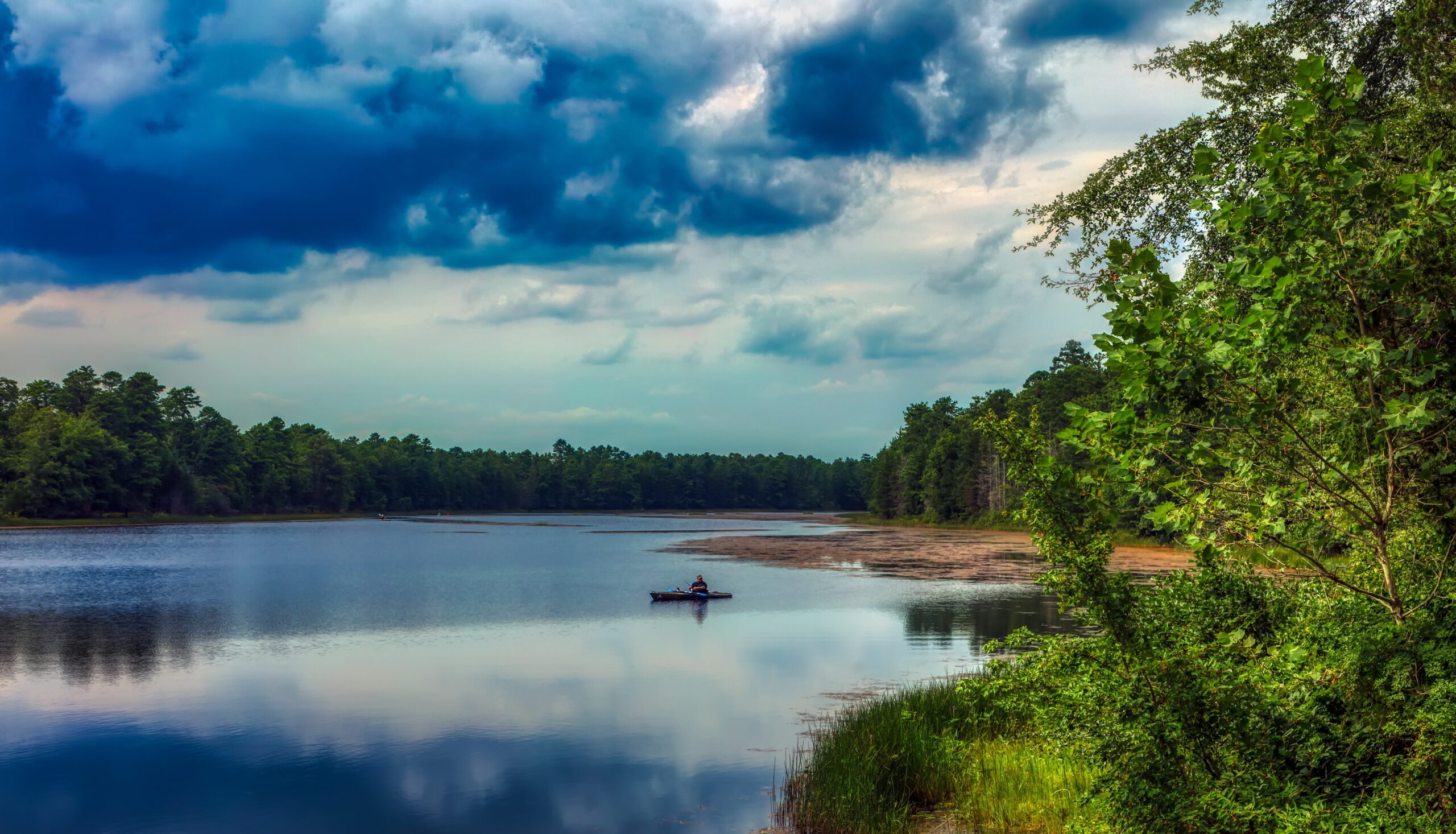Get the printable version
Each two-page document includes information about the state’s scenic byways program, in addition to a listitng and map of all state and national scenic byways within its borders.
New Jersey's Scenic Byways
The New Jersey Scenic Byway Program provides a framework for local communities to create management strategies and plans that balance development, conservation, tourism, and economic vitality. The designated scenic byways in the program exhibit many of the state’s distinctive historic, cultural, and unique characteristics, demonstrated through activities such as crabbing and shipbuilding, but also highlighted by landmarks including the State Capitol Building, the Hudson River, and the Old Barracks Museum.
Key Points
- New Jersey is home to six national scenic byways and two state scenic byways.
- The Pine Barrens Scenic Byway, New Jersey’s longest byway spanning 130 miles, houses 43 threatened or endangered animals and 92 threatened or endangered plants.
- In 2019 visitors generated $5.1 billion in state and local taxes, saving each household $1,580 in taxes.
- The New Jersey tourism industry supports 540,500 jobs.
New Jersey Byways

Map Key:
- National Scenic Byways
- State Scenic Byways

Byways Provide Access to Public Lands
New Mexico byways provide access to the state’s most spectacular public lands, including 15 national parks, 35 state parks, three national trails, 46 national historic landmarks, and three World Heritage Sites.
About the National Scenic Byways Program
The National Scenic Byways Program, established by Congress in 1991, recognizes historic, scenic, and culturally important roads, all of which promote economic development and tourism in communities around the U.S. There are more than 1,200 byways in all 50 states.
All scenic byways exhibit one or more of six core intrinsic qualities — scenic, historic, recreational, cultural, archaeological, or natural. For a road to be named a national scenic byway, it must first be designated a state, tribal, or federal agency scenic byway. Once achieving that, a road may apply for national scenic byway designation, but its intrinsic quality must be of regional significance. All-American Roads are the very best of the national scenic byways, demonstrating at least two intrinsic qualities of national significance.